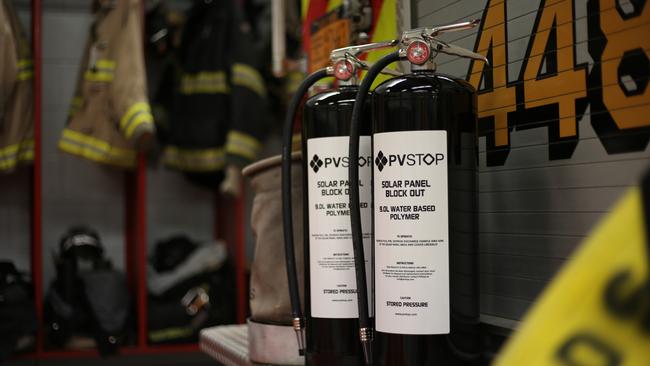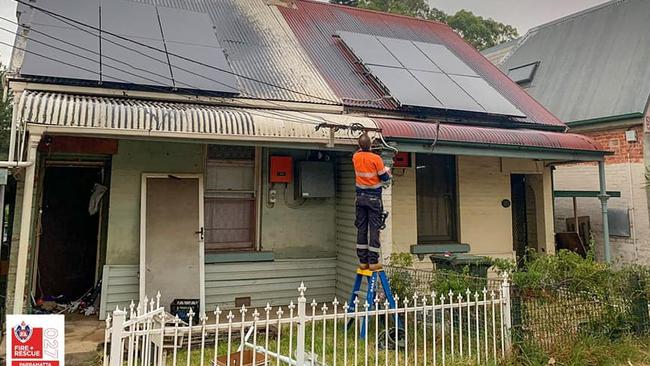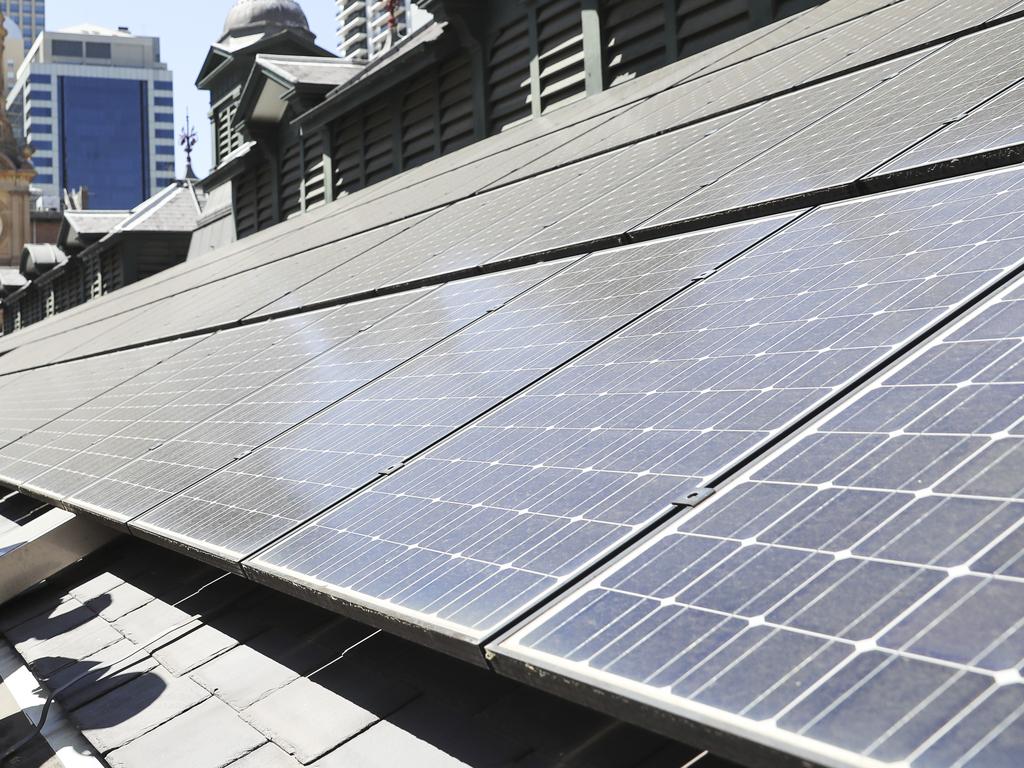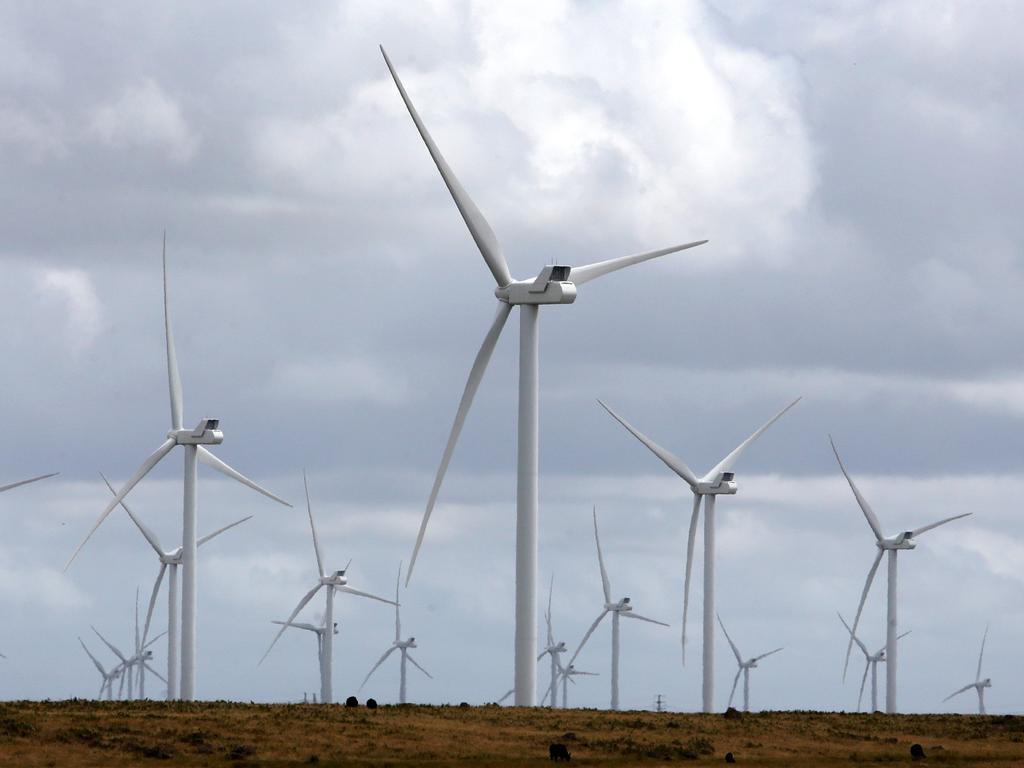PVStop’s technology makes solar panels bushfire safe
Solar panels are also presenting a new risk for firefighters as bushfires continue to ravage large parts of the country.

They’re clean and they’re green, but solar panels are also presenting a new risk for firefighters as bushfires continue to ravage large parts of the country.
As long as solar panels are exposed to sunlight, they can continue to generate DC power during and after fires — even if damaged — leading to potential secondary fires or injuries to firefighters and other volunteers.
Jim Foran, chief executive of Sydney-based firm PVStop, is working with fire departments from London to New York to mitigate the risk. However, he said in Australia interest has been slow after grappling with government bureaucracy for four years.
“We do talk about being the innovation nation but in my own experience I haven’t really found that,” Mr Foran told The Australian. “I’ve found the UK was far more proactive in supporting innovation, and even in the US where we’re just getting started.
“Like a lot of stories with Aussie innovation, it takes going offshore to make a success of it to start gaining support back at home.”
Australians are among the world’s biggest users of residential solar panels. In the past decade, installations have grown from about 40,000 to 2.2 million, or about 20 per cent of all households.
However, Mr Foran said like any electrical appliance they required regular checks — every year or two — to ensure they remained safe.
It was during fires that they presented a significant risk because of their ability to continue to generate power.
“From a fire and emergency services perspective, if they respond to an incident, their first protocol is to save lives, and if there is no risk to life, then to make safe. That means isolate gas, isolate electricity, and that’s where the issue lies.
“As long as solar panels are exposed to light, up until now, they have not been able to isolate it at the source.
“What that means is that they (firefighters) are not going to risk their lives to save a property.”
To combat this challenge, PVStop has created a water-based polymer, supplied in a container similar to a fire extinguisher, which a firefighter can spray on a solar panel, shutting it down immediately and removing any electrical risk.
Mr Foran developed the technology four years ago and immediately presented it to Australian fire services, which were impressed that a company had finally come up with a solution to a longstanding risk.
However, a roadblock arose when Mr Foran was asked what standards PVStop complied with.
“That’s both the positive and negative thing about our product,” Mr Foran said.
“We are the only ones in the world doing it, which is great. But because we are the only ones in the world doing it there were no standards or legislation supporting our technology.”
He contacted Australia’s national science agency, CSIRO, which has a track record of supporting entrepreneurship — most recently its fake meat V2 burger, a joint venture with Hungry Jack’s founder Jack Cowin.
But in Mr Foran’s case, they weren’t able to progress PVStop’s product to address the risk that solar panels posed. “We weren’t able to come up with an effective strategy to get standards or legislation to support the product,” Mr Foran said.
After drawing blanks in Australia, Mr Foran was introduced to the Building Research Establishment (BRE), which is a centre for building science in the UK — or, as he describes it, “a loose equivalent to the CSIRO”.
Fortuitously, BRE was then about 18 months into a three-year study on the hazards and risks of solar panels. Mr Foran couldn’t believe his luck.
“Our timing was very good,” he said. “BRE Global introduced me to a European Commission initiative called the Environmental Technology Verification Program (ETVP), which was put in place for technologies like ours that solve a community or an environmental need but don’t comply with any existing standards.
“We were only the fourth company in the world in the category of energy technology to receive a statement of verification from the ETVP program, and then that allowed us to legally sell the product in Europe.”
From there, the London Fire Brigade has successfully trialled PVStop’s technology and now has it available on every fire truck. Thirteen fire brigades across Britain have also adopted the product, with a new brigade signing up on average each month.

Mr Foran anticipates that all British fire brigades will carry PVStop’s products by the end of the year.
In the US, the New York Fire Department will soon start trialling PVStop, paving the way for a significant sales boost if other fire services follow.
But it’s his home market that worries Mr Foran.
“One of the things that concerns me, particularly around the current bushfire crisis, is that rural areas, per head of population, are greater supporters of solar than the metropolitan regions,” he said.
“We estimate in rural areas that one in two of the properties have solar.
“When we get past this initial crisis stage, the next stage will be salvage and clean-up and I think you’ll have a lot of volunteers out there who don’t have any training in solar and who don’t understand the breadth and depth of the risk.
“They’ll be coming across a lot of damaged solar systems as they clean up, and that’s going to create a lot of near-miss scenarios where they could be potentially electrically injured or worse.
“It could be directly from panels or from getting up on rooftops and getting a zap and falling off.”
However, Mr Foran is hopeful the technology will become more available in Australia. The ACT and Northern Territory fire and rescue services have adopted PVStop, while Fire and Rescue NSW is currently running a limited trial. Mr Foran is also hopeful the Victorian CFA and Queensland Fire and Emergency Services will start trials this year.
Corporates are also expressing interest, and Mr Foran is currently in talks with Bunnings, Australia Post and airport companies about an industrial application of PVStop’s technology.
“Government I suppose is slow-moving and it is a heavily regulated industry, for good reason,” Mr Foran said. “We are talking about life and asset risk, so they do have to be very cautious when adopting new technology.
“At the end of the day, we are a business and we have to try to make money somewhere, so you focus on the path of least resistance. Where I’m getting proactive support from the UK and US, that’s where I really have to channel our energies.”





To join the conversation, please log in. Don't have an account? Register
Join the conversation, you are commenting as Logout